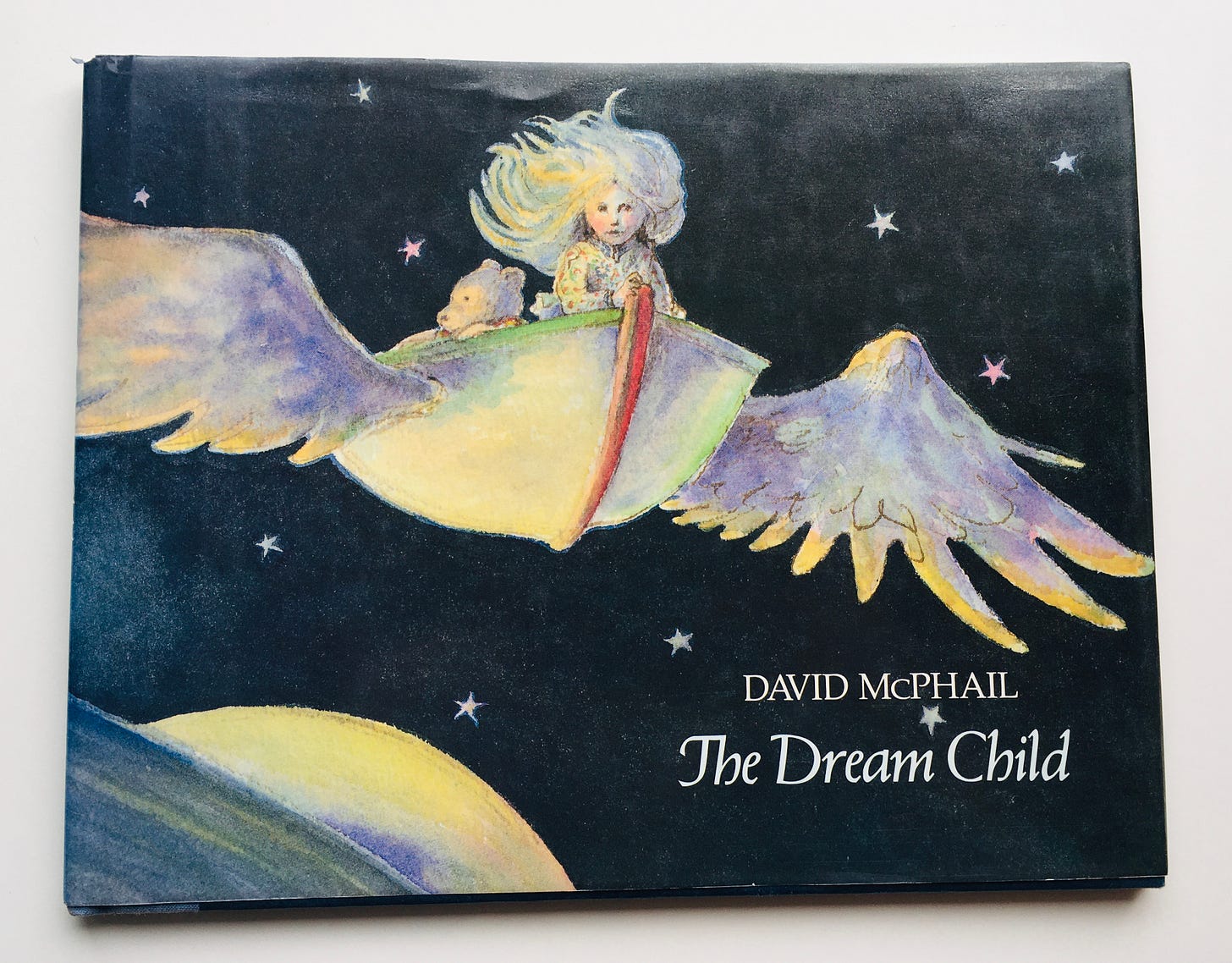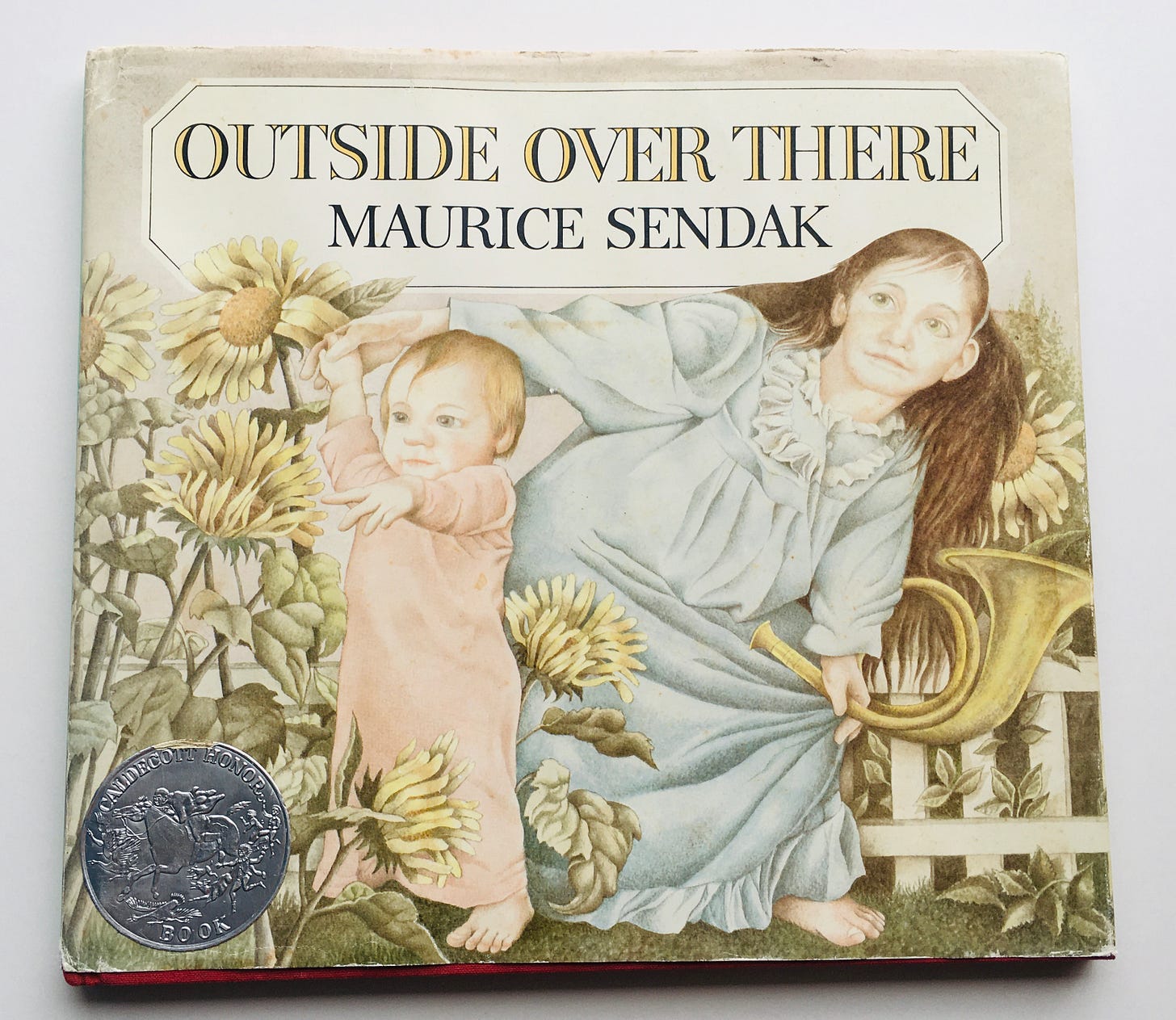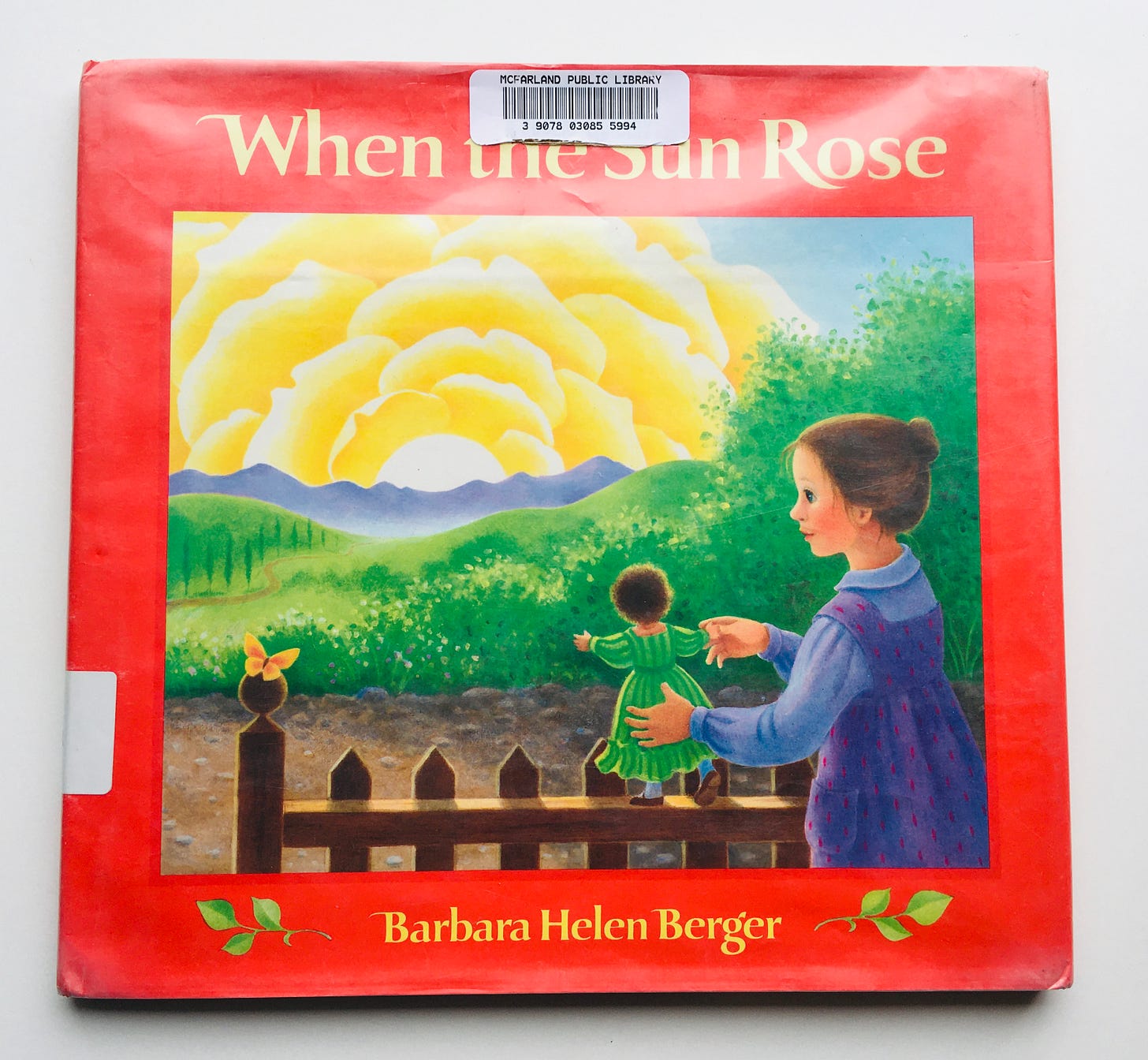Can we read? No. 13
In dreams and magic
Good morning, dears. Here we are, it’s officially fall, and another Wednesday in the world.
Before we get to it I want to make a correction to my fall edition from two weeks ago. I overlooked a few extremely worthy titles (this literally kept me awake at night, like I don’t have other things to think about?), so here they are: Autumn Story by Jill Barklem, one in the perfect Brambley Hedge seasonal collection; Wild Child by Lynn Plourde; Bella’s Fall Coat also by Lynn Plourde; and Rain Makes Applesauce by Julian Scheer (this is really more of an illustrated poem). We are digging into the fall books with relish over here.
What are you reading these days?
The Dream Child by David McPhail (1985)
This is my childhood copy of this book, and one of the few stories I remember as a very young little being (though my mother read to my every single night of my life). This is, well, the dreamy story of a little girl who takes a nighttime journey with her companion: “As the day follows the sun into tonight, down from the endless sky and beyond comes the Dream Child with Tame Bear beside her.” The poetic, nonsensical lull of McPhail’s prose, along with his characteristically soft and fuzzy illustrations, creates a quiet illusory state, where the Dream Child and Tame Bear do things like teach the frogs to sing roosting songs for the chickens, feed a hungry lion baskets of fruit and canned ham until he is strong enough to hunt again, and visit “always angry” giants and pull apart the treetops so the moon can shine down “and like a golden key'“ unlock their hearts so they smile and are happy. This title is far more cerebral than any of McPhail’s others (at least that I have read, and that is many) but that’s not a bad thing: the terrain that Dream Child and Tame Bear tread is one of the mind on the cusp of sleep, a children’s bedtime meditation book before children’s bedtime meditation books existed. This is a lovely, gentle boat trip into the land of sleep.
Outside Over There by Maurice Sendak (1981)
Even though it won the Caldecott, I’ve found that people either love or hate this book — I am the former, of course. Definitely not one of Sendak’s most popular titles and also extremely weird, this story of Ida and her baby sister, who gets snatched away by goblins in the night while their father is away at sea is, for all its strangeness — no, because of all its strangeness — deeply enchanting. “Now Ida in a hurry snatched her Mama’s yellow rain cloak, tucked her horn safe in her pocket, and made a serious mistake. She climbed backwards out her window into outside over there.” Sendak’s writing is, in my opinion, at its peak here — his rhythm is odd, the story fragmented, but it seems to make perfect sense to children (who love this and understand it, I think, in a way adults can’t), and adds depth to the otherworldly, goblin-ish feel. The illustrations match the storytelling in every way, showing just what a remarkable artist Sendak really was. This is deep in his catalogue and somewhat forgotten but it’s worth checking out, if only for its ability to totally transport you to another place, even for just a moment.
When the Sun Rose by Barbara Helen Berger (1986)
I am a big fan of Barbara Helen Berger, though she doesn’t seem too well known, and like Outside Over There, her books aren’t for everyone — her titles are weird all the time instead of just occasionally, and this is a chief compliment in my book (no pun intended — okay, maybe a little). What her titles offer in weirdness they balance in beauty: every single story, this one included, is full of the most gorgeous visual and written imagery, with soft illustrations and plots that seem to have been lifted straight from dreams. Here, a little girl is playing alone, when a friend comes to visit her at sunrise. The friend brings her lion — this seems to be a perfectly normal occurrence in this world — and together they all play all day, until dusk comes and it’s time for the friend to go. “All the way, I watched her going home. Even the stones had long shadows,” but she doesn’t despair — she trusts that her friend will keep her promise to come again. And she returns inside to a house full of yellow roses. Berger’s ability to make all of this seem both unreal and commonplace is uncanny — this is her incredible gift as a creator of children’s books — leaving readers with a wondrous, calm feeling that a gentle world waits unseen right nearby for us, whenever we want to enter it.
The Rabbit Listened by Cori Doerrfeld (2018)
In a publishing world absolutely chock-full of books about friendship and an increasing number of ones about empathy (I just wrote about one of those last week), this title stands out, if not rises to the very top. Taylor builds a magnificent tower of blocks of which he is so proud, and which almost immediately gets destroyed by a wild murder of crows (is “wild murder” of crows redundant?) Taylor is devastated. Enter a whole host of animals who each offer their own version of a solution: the chicken pushes to talk about it, the bear wants to shout about it, the elephant wants to remember, the ostrich wants to bury its head in the sand and pretend it didn’t happen. “But Taylor didn’t feel like doing anything with anybody. So eventually, they all left… until Taylor was alone. In the quiet, Taylor didn’t even notice the rabbit. But it moved closer and closer. Until Taylor could feel its warm body.” The rabbit’s ability to show up for Taylor just as he is, just as he’s feeling right here, right now without trying to fix or change anything is unmatched — this is the gold nugget here, what the whole narrative builds to, but what makes this so special is that the moment is so deserved. The tenderness and willingness to just sit with Taylor and his feelings is what makes this the best book about empathy I’ve ever read (for children or adults; I have handed it to my husband more than once and said, “Here’s a literal manual”) and for that reason I can’t recommend it enough. We should all be so lucky to have someone who offers us the immense gift of nothing more — and nothing less — than moving closer and closer until we feel a warm body.
Nora’s Castle by Satome Ichikawa (1986)
On first glance this seems like a quiet story without too much action, but that’s an erroneous read: this imaginative fantasy follows one little girl as she adventures to the far-off castle she can see from her home (which may or may not be haunted) with her faithful companions, a doll, a stuffed bear, and a dog. Ichikawa’s detailed, atmospheric illustrations draw the reader into the plucky and peculiar mood of the story as the little girl explores the rooms and ruined parts of the castle. There’s a distinctive darkness lurking just on the edges here — a feeling that something bad or scary could happen at any moment — but it never comes to fruition. Instead this curious, brave girl decides to host a dinner party “with everyone who lives here,” and accepts the invitation of White Owl to spend the night in the tower where he roosts. Joined by the friends she has met that day — bluebirds, a bat, Mister Rabbit, some toads, a spider, and White Owl — that’s exactly what she does. I love the themes of inquisitiveness and daring in this odd and magical book — no doubt I am not fearless enough to spend a night alone in an abandoned castle even as an adult — as well as the enchanting idea that we can make our own magic out of nothing, wherever we go, if we only decide to do so.
Thanks for reading this week. I appreciate every single one of you.







